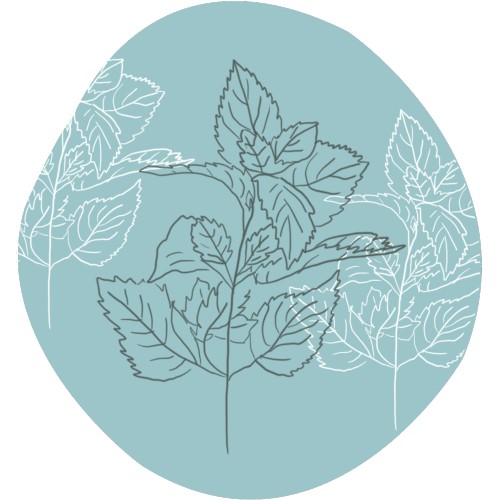Spearmint or sweet mint
A delightful scent of chlorophyll, green, fresh and invigorating.

A delightful scent of chlorophyll, green, fresh and invigorating.
This "true" mint contains a lot of carvone, a ketone. It is therefore not recommended for pregnant and breast-feeding women, nor for people suffering from nervous diseases. With this restriction in mind, it has an original personality that is not without interest. It is sufficient to use it sparingly in all its applications.
When applied externally, it aids digestion (it has the same dominant ingredient as dill or caraway). Anti-catarrhal and mucolytic, it helps to clear congested airways. According to P. Franchomme, it has calming properties on the cerebellum and medulla oblongata, which clearly distinguishes it from Mentha piperita in this respect.
Cosmetically, it is astringent and helps healing - an excellent "tensor"! The low doses of cosmetic aromatherapy (1 to 3%) are an optimum not to be exceeded. It will certainly be useful in atmospheric diffusion, as long as it is combined.
Always use a small amount, as it is known as a "masking agent", i.e. it will reduce or mask the basic smell of your composition.
One can expect, by the share of ketones, a cephalic action. The clarity of mind it induces is however largely tempered by the soothing dimension it is given. It is, par excellence, a grass identity, which always announces a character marked by restraint.
The above summary is for information purposes only: it is a synthesis of the properties described in recognised aromatherapy books and/or in accordance with ancestral and popular traditions. The paragraph on properties* is taken from André Bitsas' Holistic Aromatherapy course. His courses are given in face-to-face and e-learning formats. It is in no way a medical information or a list of indications.